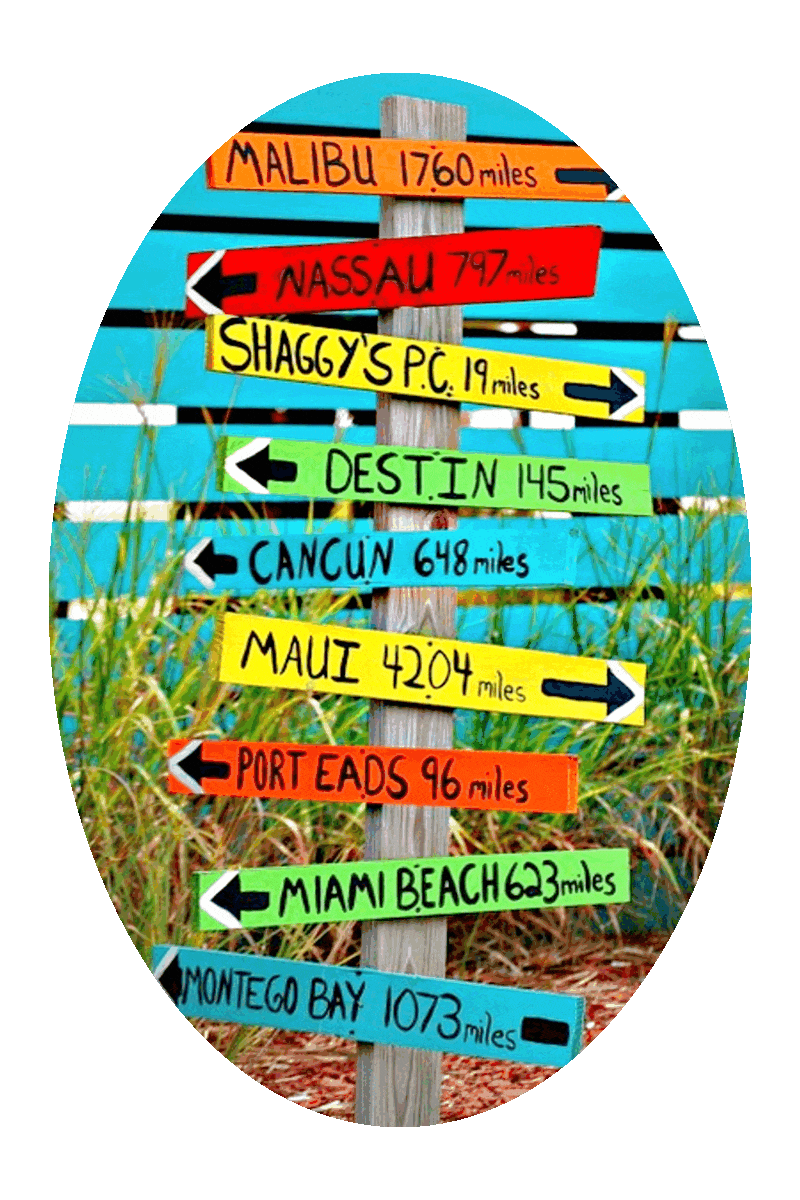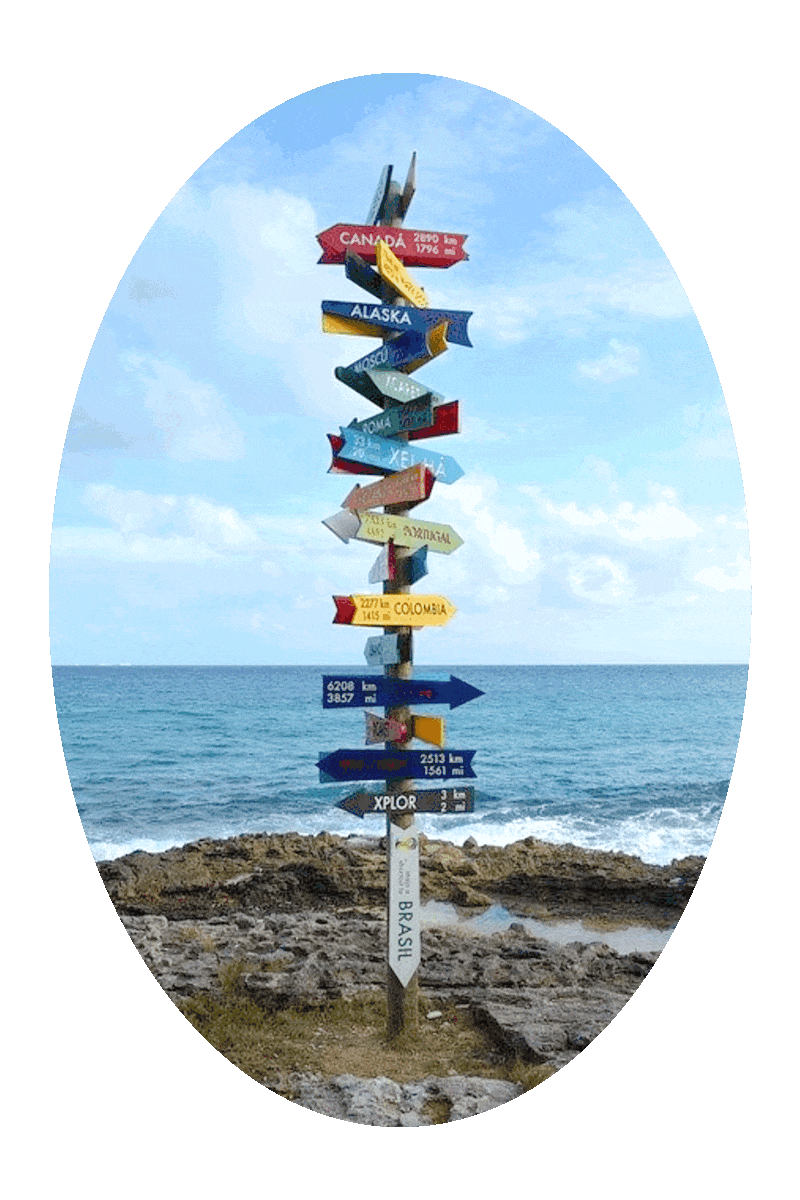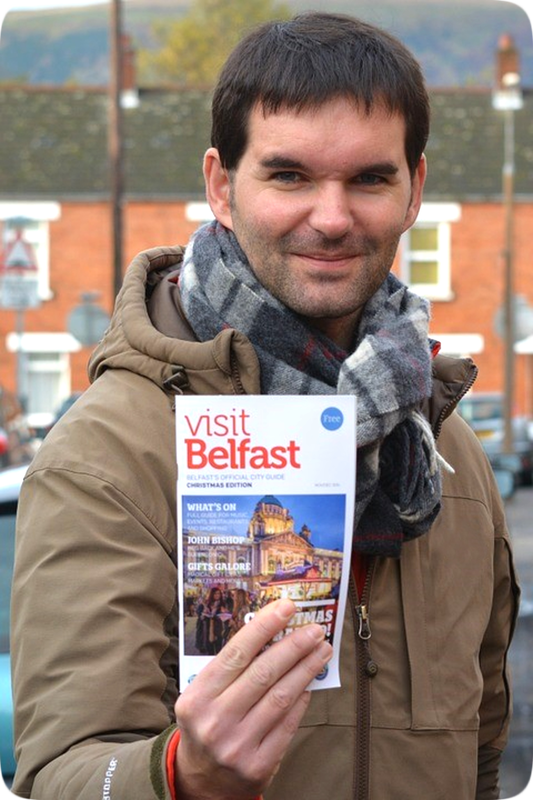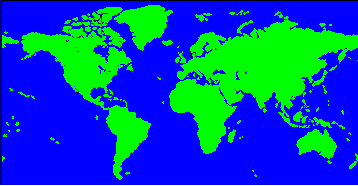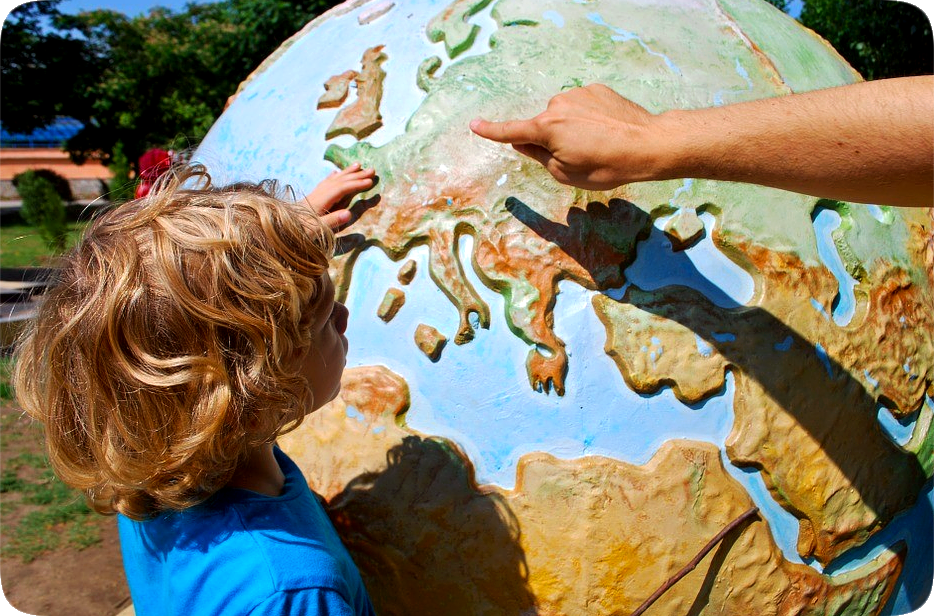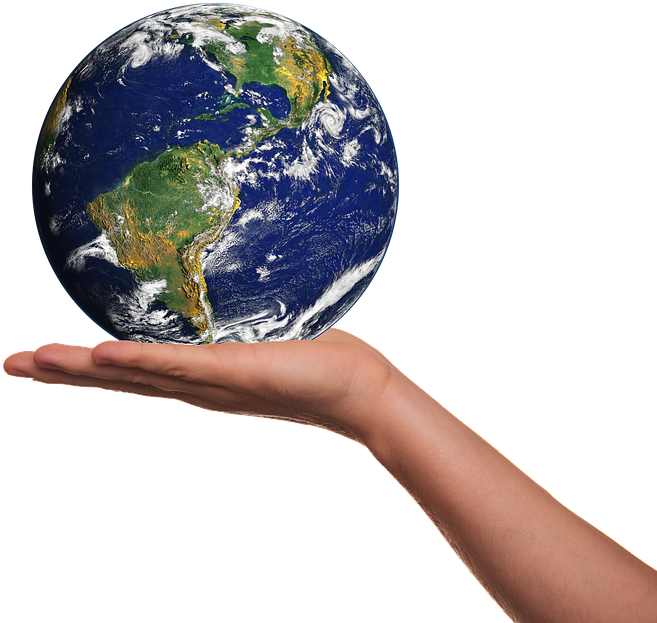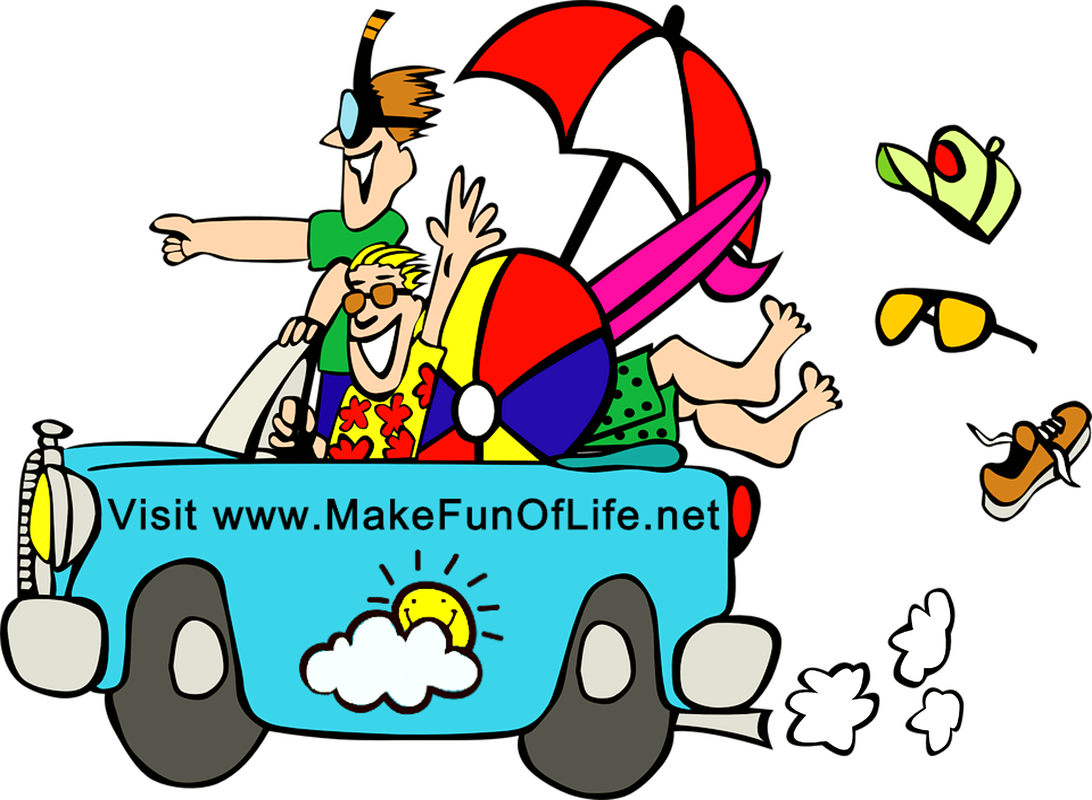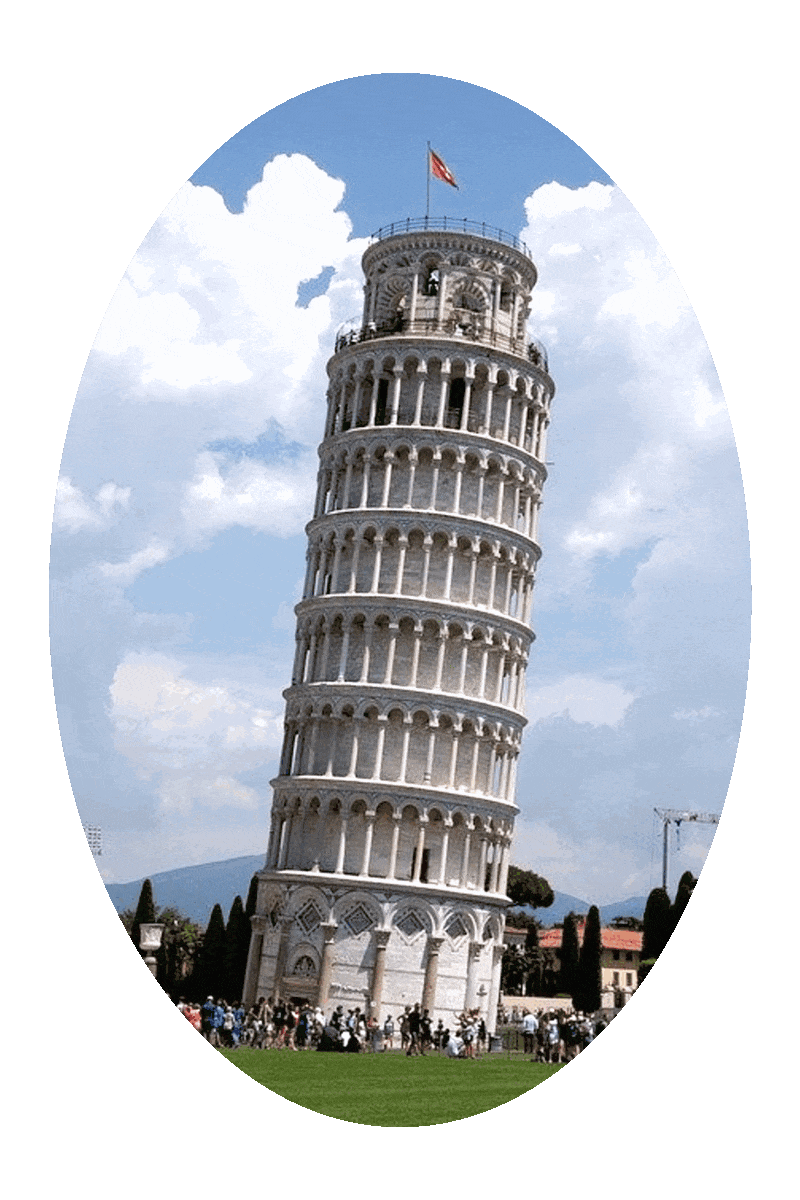Here we see a couple of Canadians engaged in their national pastime . . .
Three explorers were hiking through what is now known as Canada. “You know,” said one of the explorers, “we should name this place we’re hiking through.” “I know,” said the second explorer. “We’ll each pick a letter and then make a name out of that.” “Okay,” said the third, “I’ll go first. C, eh.” “N, eh,” said the first explorer. “D, eh,” said the second . . . and that is the fanciful tale of how the name ‘Canada’ came to be. Actually, ‘Canada’ is the European settlers’ version of ‘Kanata,’ a Saint-Lawrence-Iroquoian (Native Americans or First Nations People) word that has a literal translation of ‘land,’ ‘village,’ or ‘settlement,’ though often popularly translated as meaning ‘Big Village.’
A Canadian magazine once had a contest to find out who could come up with a Canadian equivalent of ‘as American as apple pie.’ The winning entry was ‘as Canadian as possible under the circumstances.’
The nation of Canada extends from the Pacific Ocean in the west, to the Atlantic Ocean to the east, and the Arctic Ocean to the north, with the United States of America at its southern border. At approximately 9,984,670 square kilometers (3,855,103 square miles) in size, Canada is the second largest country in the world, with Russia being the largest. Canada has the longest coastline of any country in the world, at 243,976 kilometers (151,600 miles). Canada is made up of ten provinces and three territories. Four of Canada’s ten provinces are islands: Newfoundland, Prince Edward Island, New Brunswick, and Nova Scotia.
Ninety percent of Canada’s citizens live within 100 miles of the U.S. border. They constitute an enormous standing army, at all times prepared should Americans get the ludicrous idea of invading the country to steal Canada’s vast natural maple syrup reserves.
The natives of eastern Canada tell stories of a giant named Glooscap, who carved out many of the region’s natural features to help him overcome his evil twin brothers. It is believed that the Glooscap myths may be the predecessor of the Paul Bunyan legends.
Manitou Lake on Manitoulin Island in Lake Huron is the world’s largest ‘lake within a lake,’ at 106.4 square kilometers (41.1 square miles) in size.
Canada has more freshwater lakes than the rest of the world combined, and is home to nine percent of the entire world’s renewable freshwater supply.
Cryptozoologists claim that Canada is the home of several cryptids, or life forms such as plants and animals whose existence has not been conclusively proven, including a primate called Sasquatch, a giant sloth-like creature known as the beaver-eater, a cannibalistic wild-man named Windigo, and a number of lake monsters, such as the Ogopogo in Lake Okanagan, British Columbia.
Ottawa, the capital city of Canada, is in the province of Ontario. The city was originally named Bytown after Colonel John By, who headquartered there while building the Rideau Canal that connects the Ottawa River with Lake Ontario.
The border between Canada and the United States of America is 5,525 miles long, including 1,538 miles between Canada and the American state of Alaska, making it the longest border between any two nations in the world. Who’s ready for a hike?
Russian Tourist: I want to hike from Vancouver to Toronto. Can I follow the railroad tracks?
Canadian Tourism Bureau: Sure, it’s only 4,000 miles, and do be sure to carry lots of water and polar bear repellant.
Alert, Canada, located in Nunavut territory, is the northernmost permanent human settlement anywhere in the world.
Portuguese Tourist: Which direction is North in Canada?
Canadian Tourism Bureau: Face south and then turn 180 degrees. Contact us when you get here and we will send the rest of the directions.
Myth: Canadians ride dog sleds everywhere.
Fact: Canadians travel on foot and with cars, trucks, buses, bicycles, tricycles, motorcycles, mopeds, airplanes, boats, ski-mobiles - and dog sleds.
Two major mountain ranges run through both Canada and the United States: The Rocky Mountains and the Appalachian Mountains. The two nations also share Niagara Falls and 4 of the 5 Great Lakes, with Lake Michigan being inside the borders of the United States of America.
Canadians celebrate Thanksgiving Day on the second Monday of October each year. No, they do not stuff their turkeys with snow or serve roasted icicles or drink slush flavored with maple syrup.
Overheard: Of course we celebrate Halloween in Canada. We dress up as polar bears, put on our snowshoes, and go igloo to igloo collecting maple syrup candy and moose jerky.
The longest street in the world is Yonge Street in Toronto, Canada. It measures 1,896 kilometers (1,178 miles) in length.
Cindy: Why did the Canadian cross the road?
Sidney: He saw some American do it on television.
The 20,000-year-old stone tools found in caves along the Bluefish River in Canada’s northern Yukon territory are believed to be the earliest evidence of human activity anywhere in North America.
The east coast of Canada was settled by Vikings in about C.E. 1000. Archaeological evidence of a settlement has been found at L’anse aux Meadows, Newfoundland.
Snorri, the first North American child to have European parents (named Thorfin and Gudrid), was born in Vinland in about C.E. 1000. Vinland is presently known as coastal North America, mainly in what is now Canada.
English Tourist: Do you have ATM’s (cash machines) in Canada? Can you send me a list of them in Toronto, Vancouver, Edmonton, and Halifax?
Canadian Tourism Bureau: In Canada, we do not use money, but instead trade in furs and animals hides. You can convert your money to beaver, bear, and deer pelts when you land at the airport in Canada.
In 1642, a group of religious mystics from France were inspired by a vision to build a missionary city in the Canadian wilderness. Led by Paul de Chomedey de Maisonneuve and an Ursuline nun name Jeanne Mance, they founded Montreal.
Charles Fenerty, a poet from Halifax, Nova Scotia, was the first person to use wood fibers to make paper. He started experimenting in 1839, and by 1841, he had successfully produced paper from wood pulp.
Thanks to the wide availability of Charles Fenerty’s wood-pulp paper, and the wild goose quill ink pens found there, many famous writers have hailed from Canada, including Lucy Maud Montgomery, author of “Anne of Green Gables”; Margaret Atwood, author of “The Handmaid’s Tale”; and Alice Munro, author of “Lives of Girls and Women.”
Twenty-three Bactrian (two-hump) camels were used as pack animals during the few years of the Cariboo Gold Rush in the early 1860’s in British Columbia, Canada. Though camels did not stay around long in Canada, their name lives on in the province’s Camelsfoot Range and Camelsfoot Peak, and in the city of Lillooet’s ‘Bridge of the 23 Camels.’
Three explorers were hiking through what is now known as Canada. “You know,” said one of the explorers, “we should name this place we’re hiking through.” “I know,” said the second explorer. “We’ll each pick a letter and then make a name out of that.” “Okay,” said the third, “I’ll go first. C, eh.” “N, eh,” said the first explorer. “D, eh,” said the second . . . and that is the fanciful tale of how the name ‘Canada’ came to be. Actually, ‘Canada’ is the European settlers’ version of ‘Kanata,’ a Saint-Lawrence-Iroquoian (Native Americans or First Nations People) word that has a literal translation of ‘land,’ ‘village,’ or ‘settlement,’ though often popularly translated as meaning ‘Big Village.’
A Canadian magazine once had a contest to find out who could come up with a Canadian equivalent of ‘as American as apple pie.’ The winning entry was ‘as Canadian as possible under the circumstances.’
The nation of Canada extends from the Pacific Ocean in the west, to the Atlantic Ocean to the east, and the Arctic Ocean to the north, with the United States of America at its southern border. At approximately 9,984,670 square kilometers (3,855,103 square miles) in size, Canada is the second largest country in the world, with Russia being the largest. Canada has the longest coastline of any country in the world, at 243,976 kilometers (151,600 miles). Canada is made up of ten provinces and three territories. Four of Canada’s ten provinces are islands: Newfoundland, Prince Edward Island, New Brunswick, and Nova Scotia.
Ninety percent of Canada’s citizens live within 100 miles of the U.S. border. They constitute an enormous standing army, at all times prepared should Americans get the ludicrous idea of invading the country to steal Canada’s vast natural maple syrup reserves.
The natives of eastern Canada tell stories of a giant named Glooscap, who carved out many of the region’s natural features to help him overcome his evil twin brothers. It is believed that the Glooscap myths may be the predecessor of the Paul Bunyan legends.
Manitou Lake on Manitoulin Island in Lake Huron is the world’s largest ‘lake within a lake,’ at 106.4 square kilometers (41.1 square miles) in size.
Canada has more freshwater lakes than the rest of the world combined, and is home to nine percent of the entire world’s renewable freshwater supply.
Cryptozoologists claim that Canada is the home of several cryptids, or life forms such as plants and animals whose existence has not been conclusively proven, including a primate called Sasquatch, a giant sloth-like creature known as the beaver-eater, a cannibalistic wild-man named Windigo, and a number of lake monsters, such as the Ogopogo in Lake Okanagan, British Columbia.
Ottawa, the capital city of Canada, is in the province of Ontario. The city was originally named Bytown after Colonel John By, who headquartered there while building the Rideau Canal that connects the Ottawa River with Lake Ontario.
The border between Canada and the United States of America is 5,525 miles long, including 1,538 miles between Canada and the American state of Alaska, making it the longest border between any two nations in the world. Who’s ready for a hike?
Russian Tourist: I want to hike from Vancouver to Toronto. Can I follow the railroad tracks?
Canadian Tourism Bureau: Sure, it’s only 4,000 miles, and do be sure to carry lots of water and polar bear repellant.
Alert, Canada, located in Nunavut territory, is the northernmost permanent human settlement anywhere in the world.
Portuguese Tourist: Which direction is North in Canada?
Canadian Tourism Bureau: Face south and then turn 180 degrees. Contact us when you get here and we will send the rest of the directions.
Myth: Canadians ride dog sleds everywhere.
Fact: Canadians travel on foot and with cars, trucks, buses, bicycles, tricycles, motorcycles, mopeds, airplanes, boats, ski-mobiles - and dog sleds.
Two major mountain ranges run through both Canada and the United States: The Rocky Mountains and the Appalachian Mountains. The two nations also share Niagara Falls and 4 of the 5 Great Lakes, with Lake Michigan being inside the borders of the United States of America.
Canadians celebrate Thanksgiving Day on the second Monday of October each year. No, they do not stuff their turkeys with snow or serve roasted icicles or drink slush flavored with maple syrup.
Overheard: Of course we celebrate Halloween in Canada. We dress up as polar bears, put on our snowshoes, and go igloo to igloo collecting maple syrup candy and moose jerky.
The longest street in the world is Yonge Street in Toronto, Canada. It measures 1,896 kilometers (1,178 miles) in length.
Cindy: Why did the Canadian cross the road?
Sidney: He saw some American do it on television.
The 20,000-year-old stone tools found in caves along the Bluefish River in Canada’s northern Yukon territory are believed to be the earliest evidence of human activity anywhere in North America.
The east coast of Canada was settled by Vikings in about C.E. 1000. Archaeological evidence of a settlement has been found at L’anse aux Meadows, Newfoundland.
Snorri, the first North American child to have European parents (named Thorfin and Gudrid), was born in Vinland in about C.E. 1000. Vinland is presently known as coastal North America, mainly in what is now Canada.
English Tourist: Do you have ATM’s (cash machines) in Canada? Can you send me a list of them in Toronto, Vancouver, Edmonton, and Halifax?
Canadian Tourism Bureau: In Canada, we do not use money, but instead trade in furs and animals hides. You can convert your money to beaver, bear, and deer pelts when you land at the airport in Canada.
In 1642, a group of religious mystics from France were inspired by a vision to build a missionary city in the Canadian wilderness. Led by Paul de Chomedey de Maisonneuve and an Ursuline nun name Jeanne Mance, they founded Montreal.
Charles Fenerty, a poet from Halifax, Nova Scotia, was the first person to use wood fibers to make paper. He started experimenting in 1839, and by 1841, he had successfully produced paper from wood pulp.
Thanks to the wide availability of Charles Fenerty’s wood-pulp paper, and the wild goose quill ink pens found there, many famous writers have hailed from Canada, including Lucy Maud Montgomery, author of “Anne of Green Gables”; Margaret Atwood, author of “The Handmaid’s Tale”; and Alice Munro, author of “Lives of Girls and Women.”
Twenty-three Bactrian (two-hump) camels were used as pack animals during the few years of the Cariboo Gold Rush in the early 1860’s in British Columbia, Canada. Though camels did not stay around long in Canada, their name lives on in the province’s Camelsfoot Range and Camelsfoot Peak, and in the city of Lillooet’s ‘Bridge of the 23 Camels.’
Although the Canadian province of Nova Scotia (Latin for ‘New Scotland’) was granted the British Empire’s first flag by the English King Charles I in 1625, the country of Canada itself did not have a national flag until 15 February 1965, when the ‘maple leaf’ flag was adopted by the Canadian parliament. Before then, the red ensign, a British maritime flag, was in general use.
Ice hockey is the official national winter sport of Canada, and Lacrosse, a game that was invented in Canada, is the official national Summer sport.
The modern game of ice hockey was developed in Canada, based on games that have been played since the tenth century. The rules were first published in the “Montreal Gazette” (1877).
Canadian-style math problem: A hockey puck with a mass of 0.115 kilograms moving at 35.0 meters per second strikes a rubber octopus thrown on the ice by a fan. The octopus has a mass of 0.265 kilograms. The puck and the octopus slide off together. Find their velocity.
“O Canada,” originally titled “Chant national,” was written by Adolphe-Basile Routhier (French lyrics) and set to music by Calixa Lavallée. It was first performed in Quebec City in 1880. The song was approved by the Parliament of Canada in 1967 as the unofficial national anthem and then adopted officially on 1 July 1980.
A black bear cub named Winnipeg, or Winnie for short, was once one of the most popular attractions at the London Zoo, after it was donated to the zoo by Canada in 1915. Winnie became a favorite of Christopher Robin Milne and inspired the stories written by his father, Alan Alexander Milne, about Winnie-the-Pooh.
The lowest recorded temperature in North America was a reading of 63 degrees below zero Celsius (81.4 degrees below zero Fahrenheit), that occurred at Snag, Yukon Territory, Canada, on 3 February 1947.
Newfoundland was the first part of Canada to be explored by Europeans. Ironically, it was the last area to become a province, in 1949.
Canada has made a significant contribution to rock-and-roll music, beginning with “Sh-Boom” (1954) by the Crew-Cuts. Other famous Canadian rock-and-rollers include Paul Anka, Neil Young, the Guess Who, Bachman Turner Overdrive, Steppenwolf, Avril Lavigne, Rush, and Bryan Adams.
Signs that You Might Be a Canadian
- You know how to pronounce and spell Saskatchewan without blinking.
- You are excited whenever an American television show mentions Canada, and you even make a mental note to talk about it at work or school the next day.
- You have ever switched from your heater to your air conditioner in the same day and then back again.
- You know all 4 seasons: almost Winter, Winter, still Winter, and road construction.
- ‘Eh’ is a very important part of your vocabulary and you understand all the 1,000 different meanings of ‘eh’ . . . eh?
- Someone accidentally steps on your foot, and you apologize.
- You have had a lengthy telephone conversation with someone who dialed the wrong number.
- Someone in a store offers to assist you - and they do not work there!
- You measure distance in hours.
- You understand these jokes and email them to all of your Canadian friends.
The McIntosh apple is the national apple of Canada. They’re great. If you find one that is frozen solid, it can be used as a cheap imitation hockey puck.
Canada became a sovereign nation when the British North America Act was passed by British Parliament on 1 July 1867, a day henceforth declared as Canada Day, though if it falls on a Saturday or a Sunday, the following Monday will be observed as the Canada Day holiday.
The Mounted Police were formed in 1873, with nine officers. In 1920, the Mounted Police merged with the Dominion Police to become the famous Royal Canadian Mounted Police (RCMP), an organization that presently has more than 28,000 members. ‘Mounted’ originally referred to officers on horseback, sometimes called ‘Mounties.’
Canada Facts
- Citizens of Canada are called Canadians.
- The capital city of Canada is Ottawa.
- Canada is the second largest nation on Earth in land area.
In 1527, John Rut of Saint John’s, Newfoundland (now a part of the country of Canada), sent a letter to King Henry VIII of England - the very first written communication, or correspondence, sent from North America to anywhere in the world.
Australian Tourist: Will I be able to speak English most places I go?
Canadian Tourism Bureau: Yes, but you will have to learn it first.
Canada has two official languages: English and French. The inhabitants of Quebec mainly speak French, and New Brunswick is officially bilingual (using two languages, in this instance English and French), while the rest of Canada’s people primarily speak English.
Most Canadians pronounce ‘z,’ the last letter of the English alphabet, as ‘zed’ rather than ‘zee,’ following the custom of most of the English-speaking world. It is Americans who pronounce ‘z’ as ‘zee’ to make it rhyme in the alphabet song taught in schools . . . do you remember the song that contains those memorable words ‘and now I know my ABC’s . . .’?
Gordon: What do smart Canadian students get on their tests?
Donald: Eh’s.
Whitby, Ontario, Canada has more donut stores per capita than any other place in the world. Is it on your list of top ten vacation spots yet?
Brazilian Tourist: Can you give me information about hippo racing in Canada?
Canadian Tourism Bureau: A-fri-ca is the big triangle shaped continent south of Europe. Ca-na-da is the big country to your northwest . . . oh, forget it. Sure, the hippo racing is every Tuesday night in Calgary.
Canada is known as the home of large animals like the moose and the grizzly bear, but it is also home to about 55,000 species of insects and about 11,000 species of mites and spiders.
The province of Alberta, Canada is completely free of rats, at least the ones living outdoors - does anyone in Alberta have an indoor pet rat? Alberta might be just the place for you to move to if you have murophobia, the persistent fear of rats.
“Sister Hits Moose On Way To Visit Sister Who Hit Moose.” -Canadian newspaper headline
American Tourist: I have a question about a famous animal in Canada, but I forget its name. It is a kind of big horse with horns. Are they friendly?
Canadian Tourism Bureau: The animal you are referring to is a moose. Moose are very tall and dangerous. They will eat any person they find in their territory. You can scare them away by carrying a live skunk with you to spray at any you might encounter when you go hiking and get lost for weeks in the Canadian wilderness.
While Canadians did not invent cold, snow, ice, or blizzards, they have created many other impressive inventions, including kerosene, insulin, the electronic organ, the paint roller, voice transmission by radio, the caulking gun, the snowmobile, plexiglass, the electric cooking range, and the electron microscope.
Canadian James Naismith invented the game of basketball in 1891 for his physical education students at the YMCA (Young Men’s Christian Association) Training School in Springfield, Massachusetts, United States of America, as an indoor team sport to play during long winters.
‘Canadian bacon’ is the American name for lean cured ham; in Canada it is called ‘back bacon,’ ‘pea meal bacon,’ or simply ‘bacon.’ It is different from ‘streaky bacon,’ which has a high fat content and is sliced into long thin strips, and is often fried in a skillet until crisp or crunchy and chewy. Canadian bacon can be served as a meat dish at meals any time of day, and streaky bacon is commonly served alongside eggs at breakfast. Both types of bacon are popular in sandwiches and salads and as pizza toppings. Tiny cubes of Canadian bacon, green peas, and little bits of carrots complement each other well when mixed into soups and rice dishes.
Paul: Where do Canadians keep their pigs?
Larry: In pigloos.
Poutine (po͞o’tēn) is a Canadian fast food dish consisting of potato fries (French fries) and cheese curds covered with brown gravy. The dish is prepared by frying strips of potato in cooking oil to make them crunchy on the outside and soft on the inside, and while they are still warm, cheese curds are placed atop them, and then warm gravy is poured onto them, so that the cheese curds are warmed but not melted. One translation for the word poutine is ‘mess.’ Would you please pass me a serviette (table napkin), I just spilled a mess of poutine.
Marcia: How do you spell Canada?
Lucinda: C-eh!-N-eh!-D-eh!
Jacob: What is the difference between a Canadian and an American?
Henry: A Canadian not only has a sense of humour but can also spell it correctly.
Ellen: What letter comes before ‘B’ in the alphabet?
Alan: A.
Ellen: What?
Alan: A.
Ellen: What?
Alan: A!
Ellen: Oh, are you a Canadian, eh?
Myth: Canadians all say “eh,” “aboot,” “sowrry,” and “againe.”
Fact: Some Canadians do, and some do not.
French Entrepreneur: I have developed a new product that is the fountain of youth. Where can I sell it in Canada?
Canadian Tourism Bureau: Anywhere significant numbers of Americans gather.
Myth: Canadians are lumberjacks and fur traders.
Fact: Most Canadians have mundane jobs in factories, offices, stores, restaurants, or as oil workers drilling holes in the frozen tundra.
“What is a Canadian? A Canadian is a fellow wearing English tweeds, a Hong Kong shirt, and Spanish shoes; who sips Brazilian coffee sweetened with Philippine sugar from a Bavarian cup while nibbling Swiss cheese, sitting at a Danish desk over a Persian rug, after coming home in a German car from an Italian movie . . . and then writes his member of parliament with a Japanese ballpoint pen on French paper, demanding that he do something about foreigners taking away Canadian jobs.” -Author Unknown
Canada is rich in resources: natural gas, oil, gold, coal, copper, iron ore, nickel, potash, uranium, and zinc, along with wood and water. Alberta has half of the world’s supply of bitumen, a type of pitch used in paving asphalt roads and sealing flat roofs against rain and snow.
Swedish Tourist: Is it safe to run around in the woods in Canada?
Canadian Tourism Bureau: So it is true, what they say about Swedes?
A Limerick
There was a small boy of Quebec,
Who was buried in snow to his neck;
When they said, “Are you friz?”
He replied, “Yes, I is -
But we don’t call this cold in Quebec.”
by Rudyard Kipling: as published in Hamilton Wright Mabie, Edward Everett Hale, and William Byron Forbush, editors: “Childhood’s Favorites and Fairy Stories: The Young Folks Treasury” (1927)
Myth: Canadians live in igloos.
Fact: Nearly all Canadians live in houses that are similar to the house you live in, and only a tiny number of people live in igloos in the Arctic.
The University of Calgary offers a two-day course in igloo building.
“From Sea to Sea.” [English translation]
“D’un océan à l’autre.” [French translation]
“A Mari Usque ad Mare.” [original Latin]
-George Monro Grant: Canadian national motto, derived from the “Latin Vulgate” translation of “The Bible,” ‘Psalm 72,’ verse 8: “Et dominabitur a mari usque ad mare, et a flumine usque ad terminos terrae.” (King James Version: “He shall have dominion also from sea to sea, and from the river unto the ends of the earth.”)
Much remains to be learned about the ice-and-snow-covered land of Canada and the mysterious partially frozen and partially thawed people who inhabit it. Some folks believe that in winter, Canadians hibernate underground, while others insist that they fly to South America, although no one knows for sure. If you would like to help solve these mysteries and others, ask your school counselor for advice on becoming an anthropologist, or a scientist who studies humans.
Whether you are a Canadian or a foreigner, an entrepreneur or an educator, or wishing to be a tourist or hoping to be an immigrant, you will find many more fun and fascinating facts about Canada at www.CanadaFAQ.ca.
This is Make Fun Of Life! . . . a website so simple that even an adult can operate it . . .
Ice hockey is the official national winter sport of Canada, and Lacrosse, a game that was invented in Canada, is the official national Summer sport.
The modern game of ice hockey was developed in Canada, based on games that have been played since the tenth century. The rules were first published in the “Montreal Gazette” (1877).
Canadian-style math problem: A hockey puck with a mass of 0.115 kilograms moving at 35.0 meters per second strikes a rubber octopus thrown on the ice by a fan. The octopus has a mass of 0.265 kilograms. The puck and the octopus slide off together. Find their velocity.
“O Canada,” originally titled “Chant national,” was written by Adolphe-Basile Routhier (French lyrics) and set to music by Calixa Lavallée. It was first performed in Quebec City in 1880. The song was approved by the Parliament of Canada in 1967 as the unofficial national anthem and then adopted officially on 1 July 1980.
A black bear cub named Winnipeg, or Winnie for short, was once one of the most popular attractions at the London Zoo, after it was donated to the zoo by Canada in 1915. Winnie became a favorite of Christopher Robin Milne and inspired the stories written by his father, Alan Alexander Milne, about Winnie-the-Pooh.
The lowest recorded temperature in North America was a reading of 63 degrees below zero Celsius (81.4 degrees below zero Fahrenheit), that occurred at Snag, Yukon Territory, Canada, on 3 February 1947.
Newfoundland was the first part of Canada to be explored by Europeans. Ironically, it was the last area to become a province, in 1949.
Canada has made a significant contribution to rock-and-roll music, beginning with “Sh-Boom” (1954) by the Crew-Cuts. Other famous Canadian rock-and-rollers include Paul Anka, Neil Young, the Guess Who, Bachman Turner Overdrive, Steppenwolf, Avril Lavigne, Rush, and Bryan Adams.
Signs that You Might Be a Canadian
- You know how to pronounce and spell Saskatchewan without blinking.
- You are excited whenever an American television show mentions Canada, and you even make a mental note to talk about it at work or school the next day.
- You have ever switched from your heater to your air conditioner in the same day and then back again.
- You know all 4 seasons: almost Winter, Winter, still Winter, and road construction.
- ‘Eh’ is a very important part of your vocabulary and you understand all the 1,000 different meanings of ‘eh’ . . . eh?
- Someone accidentally steps on your foot, and you apologize.
- You have had a lengthy telephone conversation with someone who dialed the wrong number.
- Someone in a store offers to assist you - and they do not work there!
- You measure distance in hours.
- You understand these jokes and email them to all of your Canadian friends.
The McIntosh apple is the national apple of Canada. They’re great. If you find one that is frozen solid, it can be used as a cheap imitation hockey puck.
Canada became a sovereign nation when the British North America Act was passed by British Parliament on 1 July 1867, a day henceforth declared as Canada Day, though if it falls on a Saturday or a Sunday, the following Monday will be observed as the Canada Day holiday.
The Mounted Police were formed in 1873, with nine officers. In 1920, the Mounted Police merged with the Dominion Police to become the famous Royal Canadian Mounted Police (RCMP), an organization that presently has more than 28,000 members. ‘Mounted’ originally referred to officers on horseback, sometimes called ‘Mounties.’
Canada Facts
- Citizens of Canada are called Canadians.
- The capital city of Canada is Ottawa.
- Canada is the second largest nation on Earth in land area.
In 1527, John Rut of Saint John’s, Newfoundland (now a part of the country of Canada), sent a letter to King Henry VIII of England - the very first written communication, or correspondence, sent from North America to anywhere in the world.
Australian Tourist: Will I be able to speak English most places I go?
Canadian Tourism Bureau: Yes, but you will have to learn it first.
Canada has two official languages: English and French. The inhabitants of Quebec mainly speak French, and New Brunswick is officially bilingual (using two languages, in this instance English and French), while the rest of Canada’s people primarily speak English.
Most Canadians pronounce ‘z,’ the last letter of the English alphabet, as ‘zed’ rather than ‘zee,’ following the custom of most of the English-speaking world. It is Americans who pronounce ‘z’ as ‘zee’ to make it rhyme in the alphabet song taught in schools . . . do you remember the song that contains those memorable words ‘and now I know my ABC’s . . .’?
Gordon: What do smart Canadian students get on their tests?
Donald: Eh’s.
Whitby, Ontario, Canada has more donut stores per capita than any other place in the world. Is it on your list of top ten vacation spots yet?
Brazilian Tourist: Can you give me information about hippo racing in Canada?
Canadian Tourism Bureau: A-fri-ca is the big triangle shaped continent south of Europe. Ca-na-da is the big country to your northwest . . . oh, forget it. Sure, the hippo racing is every Tuesday night in Calgary.
Canada is known as the home of large animals like the moose and the grizzly bear, but it is also home to about 55,000 species of insects and about 11,000 species of mites and spiders.
The province of Alberta, Canada is completely free of rats, at least the ones living outdoors - does anyone in Alberta have an indoor pet rat? Alberta might be just the place for you to move to if you have murophobia, the persistent fear of rats.
“Sister Hits Moose On Way To Visit Sister Who Hit Moose.” -Canadian newspaper headline
American Tourist: I have a question about a famous animal in Canada, but I forget its name. It is a kind of big horse with horns. Are they friendly?
Canadian Tourism Bureau: The animal you are referring to is a moose. Moose are very tall and dangerous. They will eat any person they find in their territory. You can scare them away by carrying a live skunk with you to spray at any you might encounter when you go hiking and get lost for weeks in the Canadian wilderness.
While Canadians did not invent cold, snow, ice, or blizzards, they have created many other impressive inventions, including kerosene, insulin, the electronic organ, the paint roller, voice transmission by radio, the caulking gun, the snowmobile, plexiglass, the electric cooking range, and the electron microscope.
Canadian James Naismith invented the game of basketball in 1891 for his physical education students at the YMCA (Young Men’s Christian Association) Training School in Springfield, Massachusetts, United States of America, as an indoor team sport to play during long winters.
‘Canadian bacon’ is the American name for lean cured ham; in Canada it is called ‘back bacon,’ ‘pea meal bacon,’ or simply ‘bacon.’ It is different from ‘streaky bacon,’ which has a high fat content and is sliced into long thin strips, and is often fried in a skillet until crisp or crunchy and chewy. Canadian bacon can be served as a meat dish at meals any time of day, and streaky bacon is commonly served alongside eggs at breakfast. Both types of bacon are popular in sandwiches and salads and as pizza toppings. Tiny cubes of Canadian bacon, green peas, and little bits of carrots complement each other well when mixed into soups and rice dishes.
Paul: Where do Canadians keep their pigs?
Larry: In pigloos.
Poutine (po͞o’tēn) is a Canadian fast food dish consisting of potato fries (French fries) and cheese curds covered with brown gravy. The dish is prepared by frying strips of potato in cooking oil to make them crunchy on the outside and soft on the inside, and while they are still warm, cheese curds are placed atop them, and then warm gravy is poured onto them, so that the cheese curds are warmed but not melted. One translation for the word poutine is ‘mess.’ Would you please pass me a serviette (table napkin), I just spilled a mess of poutine.
Marcia: How do you spell Canada?
Lucinda: C-eh!-N-eh!-D-eh!
Jacob: What is the difference between a Canadian and an American?
Henry: A Canadian not only has a sense of humour but can also spell it correctly.
Ellen: What letter comes before ‘B’ in the alphabet?
Alan: A.
Ellen: What?
Alan: A.
Ellen: What?
Alan: A!
Ellen: Oh, are you a Canadian, eh?
Myth: Canadians all say “eh,” “aboot,” “sowrry,” and “againe.”
Fact: Some Canadians do, and some do not.
French Entrepreneur: I have developed a new product that is the fountain of youth. Where can I sell it in Canada?
Canadian Tourism Bureau: Anywhere significant numbers of Americans gather.
Myth: Canadians are lumberjacks and fur traders.
Fact: Most Canadians have mundane jobs in factories, offices, stores, restaurants, or as oil workers drilling holes in the frozen tundra.
“What is a Canadian? A Canadian is a fellow wearing English tweeds, a Hong Kong shirt, and Spanish shoes; who sips Brazilian coffee sweetened with Philippine sugar from a Bavarian cup while nibbling Swiss cheese, sitting at a Danish desk over a Persian rug, after coming home in a German car from an Italian movie . . . and then writes his member of parliament with a Japanese ballpoint pen on French paper, demanding that he do something about foreigners taking away Canadian jobs.” -Author Unknown
Canada is rich in resources: natural gas, oil, gold, coal, copper, iron ore, nickel, potash, uranium, and zinc, along with wood and water. Alberta has half of the world’s supply of bitumen, a type of pitch used in paving asphalt roads and sealing flat roofs against rain and snow.
Swedish Tourist: Is it safe to run around in the woods in Canada?
Canadian Tourism Bureau: So it is true, what they say about Swedes?
A Limerick
There was a small boy of Quebec,
Who was buried in snow to his neck;
When they said, “Are you friz?”
He replied, “Yes, I is -
But we don’t call this cold in Quebec.”
by Rudyard Kipling: as published in Hamilton Wright Mabie, Edward Everett Hale, and William Byron Forbush, editors: “Childhood’s Favorites and Fairy Stories: The Young Folks Treasury” (1927)
Myth: Canadians live in igloos.
Fact: Nearly all Canadians live in houses that are similar to the house you live in, and only a tiny number of people live in igloos in the Arctic.
The University of Calgary offers a two-day course in igloo building.
“From Sea to Sea.” [English translation]
“D’un océan à l’autre.” [French translation]
“A Mari Usque ad Mare.” [original Latin]
-George Monro Grant: Canadian national motto, derived from the “Latin Vulgate” translation of “The Bible,” ‘Psalm 72,’ verse 8: “Et dominabitur a mari usque ad mare, et a flumine usque ad terminos terrae.” (King James Version: “He shall have dominion also from sea to sea, and from the river unto the ends of the earth.”)
Much remains to be learned about the ice-and-snow-covered land of Canada and the mysterious partially frozen and partially thawed people who inhabit it. Some folks believe that in winter, Canadians hibernate underground, while others insist that they fly to South America, although no one knows for sure. If you would like to help solve these mysteries and others, ask your school counselor for advice on becoming an anthropologist, or a scientist who studies humans.
Whether you are a Canadian or a foreigner, an entrepreneur or an educator, or wishing to be a tourist or hoping to be an immigrant, you will find many more fun and fascinating facts about Canada at www.CanadaFAQ.ca.
This is Make Fun Of Life! . . . a website so simple that even an adult can operate it . . .







